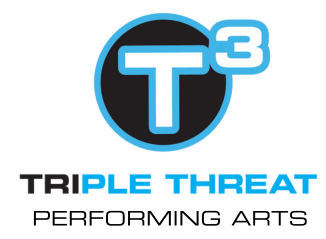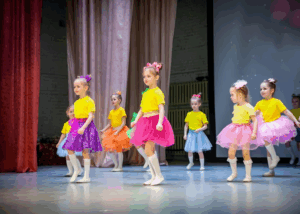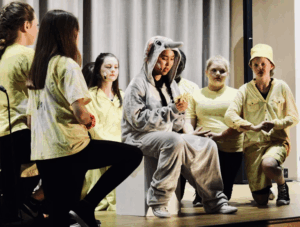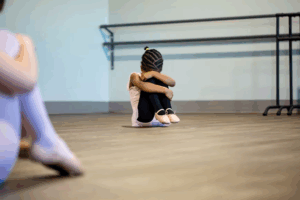

As the world of performing arts evolves, new ideas are transforming how artists create, connect, and communicate with one another. Now in 2025, people are once again valuing artistic integrity, meaningful experiences, and live performances. This is happening through socially conscious art and collaboration across disciplines. Digital platforms get a lot of attention, but many performing arts schools, especially those that teach in person, still value the significance of shared spaces and human contact.
In this article, we examine five emerging trends that indicate the direction of the future of the performing arts and what that journey entails for teachers, audiences, and artists alike.
Socially Conscious Art Takes Center Stage
The relevance of social problems in art is more clear than ever in 2025. Artists are using the stage for more than just entertainment; they’re using it to speak out and fight for their beliefs. People are using the performing arts, such as theater, dance, and music, to provide a voice for those who are often ignored and to encourage change.
Students use art to discuss current events, advocate for social justice, and reflect on their own lives. This movement isn’t just happening in big cities. Community-led projects that focus on physical training are making waves with unique, purpose-driven performances that deal with real-world problems.
This movement is significant not only because it raises awareness, but also because it fosters a generation of artists who are more emotionally aware and socially engaged. In the world of the performing arts, authenticity and impact are increasingly more important than showmanship.
Key Features:
- Strong narratives centered around social issues
- Inclusive casting and production teams
- Audience engagement through post-show discussions and workshops
Interdisciplinary Collaboration Across Performing Arts Forms
One of the most prominent trends in 2025 is the increasing collaboration between various fields. Theatre, dance, music, visual arts, spoken word, and even science are all coming together to make new experiences that are hard to put into words.
In this new world, kids don’t just utilize art as a tool; they use it as a language with many meanings. Choreography, live painting, original poetry, and improvisational music can all be part of a single performance, and they all tell the same tale.
For instance, a T3 triple-performing arts ensemble might put on a show that combines cultural storytelling, modern dance, and classical music. This new idea suggests that more and more people want to appear to have the complicated lives we live now, when no single medium is enough.
Key Features:
- Co-creation among diverse artistic disciplines
- Experimental staging and nonlinear storytelling
- Curriculum shifts that support integrated training
Community-Focused Performance and Education
Many artists are exploring within themselves and their communities rather than following global trends. In this kind of learning, performers develop deep, local connections through physical, face-to-face education.
This return to in-person training is a response to the widespread focus on digital performance. It understands the importance of artists and audiences exchanging energy in real-time and the richness of collaborative creative processes.
These programs bring together teachers and people who love education to help kids develop their skills without the stress of going viral. Instead, progress, discipline, and making a difference in the community are indicators of success.
Key Features:
- Emphasis on physical classes and mentorship
- Performances tailored to local cultural contexts
- Greater accessibility for youth in underrepresented regions and communities
Hyper-Personalization in Artistic Development
By 2025, hyper-personalization has moved beyond technology and into the world of performance training. Students are no longer expected to learn or study in the same ways. Instead, their unique creative identities are encouraged early on and carefully cultivated.
This method is most clear in performing arts institutions and conservatories, where teachers, parents, and students can work cooperatively to make individualized personal growth plans. In this context, kids utilize art to learn about who they are, where they come from, what strengths they possess, and how they like to express themselves.
In-person coaching is superior to generic digital learning modules because it allows learners to receive immediate feedback, adjust their alignment, gain emotional support, and engage in activities tailored to their needs. This one-on-one attention not only helps with technique but also builds long-term confidence and self-awareness.
Key Features:
- Individualized lesson plans and coaching
- Performances structured around student-driven themes
- Integration of wellness, mindset, and emotional intelligence
Redefining the Audience-Performer Relationship
Another significant change is the way people interact with performances. In 2025, people don’t just watch; they are recognized as co-creators. Performing artists can connect more deeply with their communities through interactive experiences, immersive theater formats, and open rehearsals.
This trend is changing the way the performing arts can be presented. People want to feel emotionally invested, socially connected, and intellectually stimulated when they watch something. More places are now having pre-show discussions, open houses behind the scenes, and forums for audience feedback.
In small, community-focused performance spaces, performers and audiences can interact with each other even more directly. These shared moments, such as a community Q&A or a child’s first time on stage, keep people engaged.
Key Features:
- Interactive or immersive elements in shows
- Increased access to performers before and after events
- Emphasis on feedback, connection, and ongoing dialogue
Why Do These Trends Matter in Performing Arts?
These new tendencies indicate that the arts are evolving not only in form but also in their underlying principles. The goal used to be getting applause; now, it’s making a difference. In the past, ticket sales were the primary focus. Now, it’s how art affects people and how it changes the community.
In 2025, the future of the performing arts won’t depend only on big digital reach or dazzling shows. It excels in classrooms, black box theaters, community centers, and rehearsal studios—places where acting is both personal and political, expressive and profound.
These trends demonstrate what the world of the performing arts should be like when it is open to everyone, inclusive of everyone, and grounded in the real lives of students, teachers, and communities.
Final Thoughts
The future isn’t about discarding tradition; it’s about giving it new life with a purpose. The best-performing arts experiences aren’t the ones that go viral; they’re the ones that reach the heart of who we are, how we feel, and what it means to be human.
If you’re a teacher, a parent, or a student waiting nervously in the wings, remember this: the most essential thing about the arts in 2025 isn’t the technology or the trend—it’s the people.
At its heart, the future of T3 triple performing arts organization, depends on relationships, strength, and genuine expression. Those values remain strong in programs that rely on physical interaction. This shows that even in a digital environment, the best stage is the one you can go onto with your complete self.




